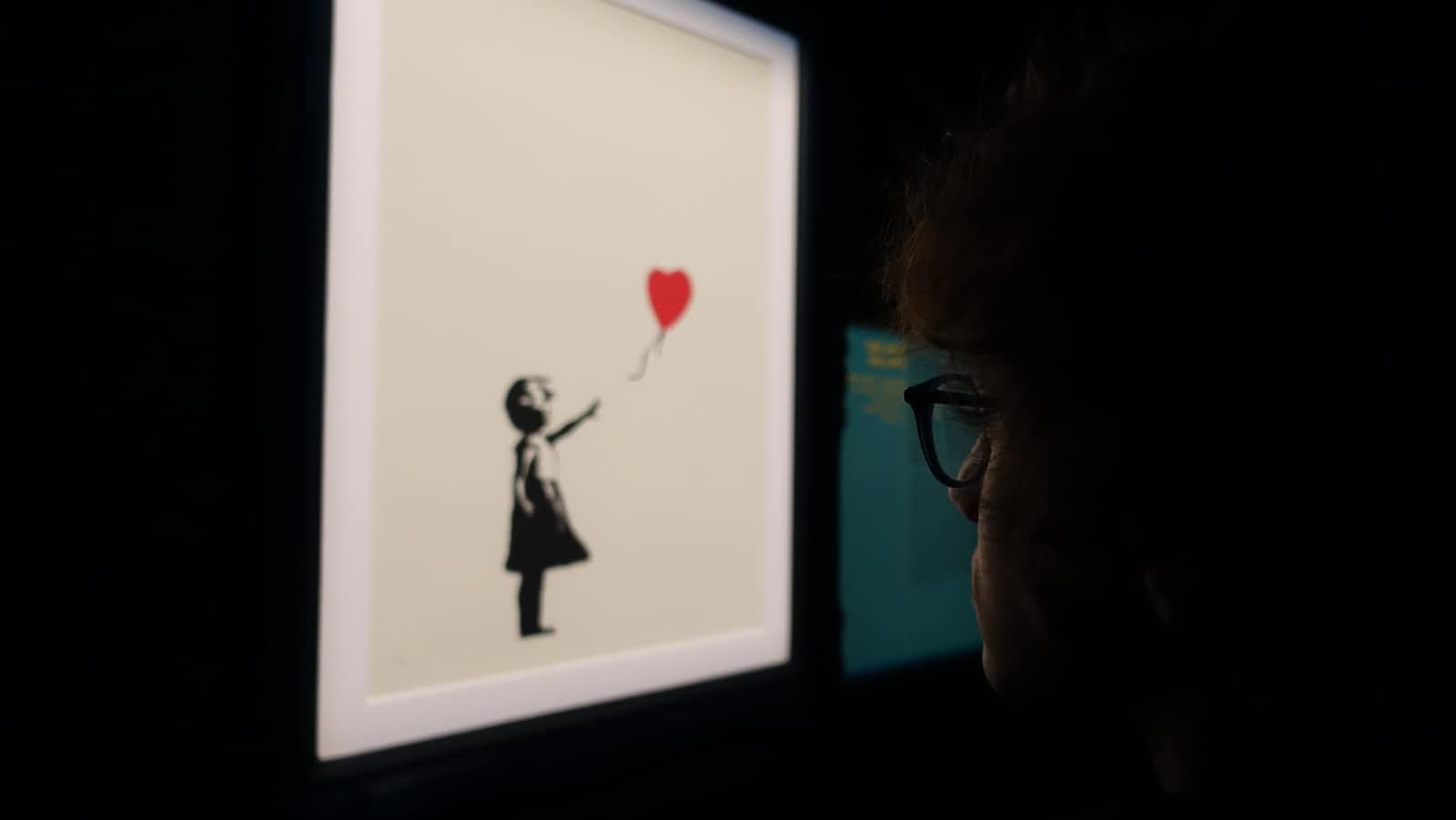
Banksys Flower Bomber trademark dispute defeated by greetings card company
What you need to know (in a nutshell)
- Banksy has lost a legal battle with a greetings card firm over the trademark of one of his most famous works.
- The European Union trademark office has rejected his trademark and accused him of being “inconsistent with honest practices” when trying to protect it.
- The EUIPO also said that Banksy applied for trademarks to have legal rights over his works without resorting to copyright law.
Full Article
In a recent legal development, enigmatic street artist Banksy has been denied the trademark of one of his most renowned works following a challenge by North Yorkshire-based Full Colour Black. The greetings card company questioned Banksy’s entitlement to safeguard this image of a protester hurling flowers, leading the European Union Trademark Office to declare it “inconsistent with honest practices.” For a trademark to hold validity, its holders must actively use the image associated with selling goods, a practice Banksy failed to demonstrate in this instance. Consequently, the artist will no longer possess exclusive rights to use or profit from merchandise featuring this artwork, an unfortunate outcome for a figure whose influence extends far beyond street art culture.
Banksy’s company first applied for the trademark of the famed image in 2014. Still, there was no evidence of the artist producing merchandise featuring the image until 2019, when Full Colour Black challenged his trademark attempt. Banksy’s reluctance to reveal his identity under copyright laws is cited as the reason behind this delay. In response to the challenge, he opened an online store and a shop front in Croydon, recognising that meeting certain EU law categories would necessitate merchandising activities.
The European Union Intellectual Property Office (EUIPO) observed that Banksy had no intention of utilising the trademark when he applied for it and deemed his actions inconsistent with honest practices. The EUIPO also discovered evidence suggesting Banksy’s objective was to secure legal rights over his work without relying on copyright law, as he frequently disdains such protection.
Despite Banksy’s anonymity and disdain for intellectual property rights, he and his corporate entity recently filed a trademark for one artwork to protect it from unauthorised use. Trademarks offer a perpetual monopoly compared to the limited duration of copyright protection and allow Banksy to remain anonymous while indefinitely safeguarding his work.
The company that initiated this challenge will likely contest additional works, as they have already taken action on six other Banksy pieces, demonstrating their commitment to pursuing fair protection measures that do not compromise anonymity or artistic control.
Banksy’s entire trademark portfolio may be in jeopardy, though his representatives have not indicated any intent to use their trademarks for legal protection purposes. Copyright and trademark specialist, Liz Ward from Virtuoso Legal, commented on the unusual nature of such cases, as artists typically rely on copyright legislation to prevent unauthorised use of their artworks. Inquiries for comment from Banksy’s representatives have thus far gone unanswered.